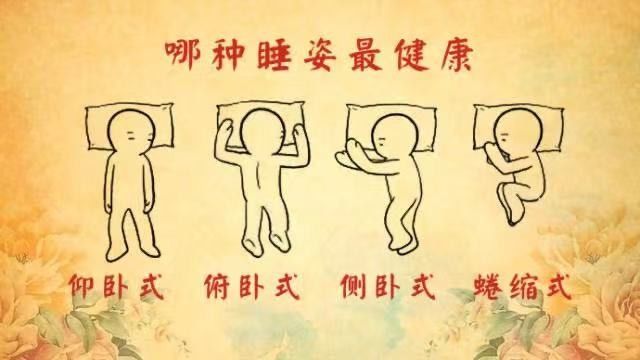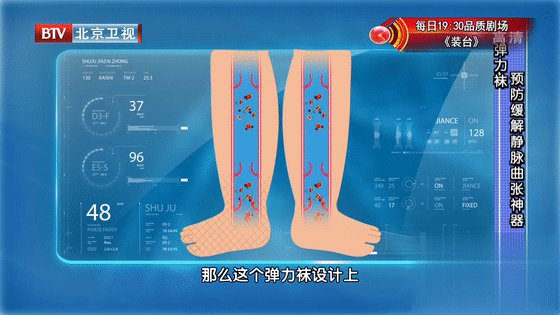Sleep is a must for everyone, and good sleep is also good for the body:
*Remove fatigue and restore physical strength;
*Protect the brain, increase creativity and improve cognitive function;
*Improve mood and reduce stress;
*Promote the body’s self-repair, improve immunity, enhance resistance…
So lying on the bed, which position do you use to fall asleep deeply? “Soldiers sleep” lying flat, “baby sleep” curled up…

And you know, some people have poor sleep quality for a long time, wake up very tired, and even have back pain, the problem may lie in the sleeping position!
1
3 sleeping positions are not suitable for everyone
1 prone
The so-called prone position is what we call “sleeping on the stomach”. This sleeping position is the most unhealthy and harmful.
①This sleeping position will put pressure on the nape of the neck, and over time, it will easily cause neck and back pain;
②It can’t keep the spine in a natural physiological state. Often sleeping like this may cause the spine to bend and dislocate;
③The prone sleeping position will also compress the eyeball, resulting in increased intraocular pressure, which can cause the eyeball to swell and even vision loss in the long run;
④ Lying on the stomach for too long will compress the chest, affect the circulation of qi and blood, and may cause heart discomfort and difficulty breathing.

2 curled up
Curling up is sleeping with hunched waist and back, hands and feet huddled together. A survey shows that one out of every five people in this sleeping method has suffered from back pain and neck pain in the past 6 months. Know: The human back feels most comfortable when it is straight.

3 sleeping with my arms on my head
Habitually sleeping with the arm resting on the arm, it is easy to compress the radial nerve of the upper arm and cause damage.
Case: A few days ago, in Changsha, Hunan, a 39-year-old woman took a nap with her arm resting on her arm after cleaning at home. She woke up an hour later and found that her right hand was numb and could not be lifted. She could not even feel her fingers. She was later diagnosed “Right upper extremity radial nerve injury”.

(The picture comes from the network screenshot)
The radial nerve, which controls our triceps muscle, can cause movement and sensory disturbances when it is damaged, doctors say.
Thus, people who like to sleep with their arms on their pillows, if they wake up and cannot move their arms, if they cannot relieve themselves after half an hour, they must seek medical treatment in time, diagnose and treat them early, so as not to delay the disease.
2
Exclusive sleeping positions for different groups of people
Sleep more comfortably
1 Lie down on your back
①Suitable for most people
For normal people, i.e. people who are not sick, lying on their backs is fine.
Lying on the back will not compress the body organs and chest, so that the breathing can be unobstructed, the body can relax better, and the quality of sleep can be guaranteed; at the same time, it can also avoid the “close contact” between the face and the pillow and reduce the chance of bacterial infection.

②Suitable for cervical spondylosis and lumbar disc herniation
The cervical, thoracic, lumbar, and coccygeal vertebrae have a certain degree of curvature. When lying on the back, it can just conform to the physiological curvature of the cervical vertebrae, so that the pressure on the lower back can be fully released, thereby helping to improve cervical vertebra deformity and preventing cervical spondylosis.
But beware: For people with chronic snoring or sleep apnea, the supine position can easily induce or increase the severity of snoring.
Because when lying on the back, the base of the tongue will naturally fall, which is more likely to block the airway, obstruct breathing and produce snoring. In severe cases, it can even completely block the airway and cause apnea. Therefore, it is best not to lie on your back for such people.

2 supine + booster
①varicose veins
This group of people can raise their legs when sleeping, so that their lower limbs form 30° with the plane, and keep their lower limbs above the level of the heart. This promotes smooth blood flow back to the heart and reduces the severity of varicose veins.
In addition, this group of people can tap the lower limbs to promote blood circulation in the lower limbs, make the muscles of the lower limbs contract, and play the role of the calf muscle pump, and can also wear elastic stockings during the day.

②patients with gastroesophageal reflux
Those with frequent acid reflux can raise the foot of the head side of the bed when sleeping.
Make the bed and the ground an angle of about 30°, so that the whole bed has a high-rise slope. This improves gastroesophageal reflux through gravity. Such patients can also sleep on the left side.

3 right lateral position
①People with gastritis or digestive dysfunction
Anatomically, the greater curvature of the stomach and the exits from the stomach to the duodenum and the small intestine to the large intestine are all on the left side. Sleeping on the right side will not compress these tissues, which is conducive to the digestion and emptying of food.
However, it should be noted that patients with digestive dysfunction such as esophageal reflux should sleep on the left side if they like to lie on their side. If you sleep on the right side, the amount of acidic fluid refluxed from the stomach to the esophagus will be much greater than normal, and it will continue to cause heartburn.

②most people with heart disease
Although the statement that “lying on the left side will compress the heart” is inaccurate and has no effect on ordinary people, for most people with heart disease, the right side lying position is indeed better than the left side Recumbent position.
The human heart is not located in the center, but 1/3 to the right and 2/3 to the left. When lying on the left side, because the heart is located below the midline of the body, the action of gravity will cause too much blood to flow to the heart, and the heart will bear a greater burden, so the right side should be taken.

4 sleeping on the left side
Pregnant women sleep in a more casual position in the first trimester, but in the second and third trimesters, it is more recommended to take the left lateral position to rest.
On the one hand, lying on the left side can reduce the compression of the uterus, maintain normal blood flow, and ensure the blood supply of the placenta; on the other hand, lying on the left side can reduce the compression of the uterus on the inferior vena cava and improve the blood supply to the brain tissue. It is beneficial to avoid and reduce the occurrence of pregnancy-induced hypertension.
5People with thoracic and lung diseases, the specific sleeping position needs to be divided into symptoms
①Patients with emphysema should lie on their back and put up a pillow to keep the airway open;
②Asthma patients should not lie down when asthma attacks, and should be in a semi-recumbent position to relieve dyspnea;
③For patients with hemoptysis symptoms, it is advisable to adopt the lying position on the affected side to prevent blood clots from blocking the bronchial tubes and causing difficulty in breathing.

3
Each sleeping position has a “fit” pillow
In addition to sleeping position, pay attention to the height of the pillow:
1 People who are accustomed to lying on their backs
It is best to choose a pillow that is fluffy and soft, about 10 cm high; or the height of the pillow should be equal to the height of your fist after you lie down (the height of the clenched fist and the tiger’s mouth upward is the fist height standard).

2 people who are used to sleeping on their side
The pillow should be thicker, and the height should be the same as your shoulder width after lying down.
In addition, the length and width are also the key points for choosing a pillow: it is recommended that the length of the pillow for adults is between 50 and 60 cm, the width is 20-23 cm for men and 18-21 cm for women. But you can go to the physical store to try it out and choose the one that suits you.

(I am the official WeChat account of a big doctor)